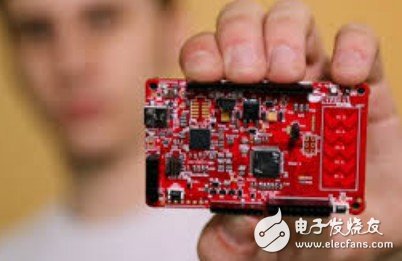Cypress PSoC 4: Let the design meet future needs
Today's embedded systems are becoming more and more complex, and engineers in design will encounter many challenges. A slight change in product demand will result in a redesign of the system and a direct impact on the time-to-market, and the design risks associated with the innovation required to increase product competitiveness are increasing. However, existing MCUs have difficulty providing the required analog and digital matching reference designs. Cypress's new PSoC4 solution brings flash memory devices equivalent to field-programmable ASICs to embedded designs without the impact of production cycles or one-time engineering costs (NRE). The PSoC4, based on the ARM Cortex-M0 core, tightly integrates configurable analog and digital circuitry with on-chip microcontrollers, reducing the number of components and solving the complex signal chain design that engineers find difficult to get started with. Now, Cypress PSoC 4's first two series of chips PSoC 4100 and PSoC4200 are on the market. Compared to general-purpose MCUs, PSoC 4's unique advantages greatly expand its application areas.

Freely defined digital peripherals
PSoC 4 creates a new embedded system design pattern that integrates high-performance analog, programmable logic, memory, and microcontroller functions into a single on-chip system, simplifying the design process for embedded systems. The time to market for the final product is getting shorter and shorter. Within PSoC4 (currently only supported by the PSoC4200), there are up to four Universal Digital Blocks (UDBs) containing a set of PLDs, 8-bit data channels, FIFOs, and ALUs that can be easily created using a library of more than 50 digital functional components. Customizable peripherals. In addition, two serial communication modules in the UDB that can be freely configured as I2C, SPI or UART can be reset to the required standard digital peripherals depending on the system configuration.
Minimal analog signal chain design
The integrated intelligent analog components of the PSoC 4 series, such as op amps integrated on the same chip, low-power comparators, and fast successive approximation ADCs, can meet the market demand for general-purpose 8-bit and 16-bit microcontrollers, making it easy The transition from a dedicated microcontroller platform to a powerful and flexible ARM platform. The implementation of the analog subsystem has no software overhead and can meet the precision level simulation requirements. It is a hardware mixed signal design that is truly independent of the MCU subsystem.
Low power consumption, low leakage current
In addition to additional processing power and enhanced digital blocks, PSoC4 has the best power consumption of approximately 150 nA while maintaining SRAM memory, programmable logic operation, and fast wake-up from interrupts. The power consumption in stop mode is approximately 20 nA while maintaining the ability to wake up from the I/O pins. The comparator in PSoC4 wakes up the device from Deep Sleep and Hibernate mode for only 25μs. In addition, PSoC 4 has the widest operating voltage range of all Cortex-M0 devices, supporting all analog and digital operating voltages from 1.71V to 5.5V.
Equipped with leading capacitive touch solutions
In addition to low cost, the PSoC4 is also equipped with enhanced CapSense capacitive touch sensing. CapSense is Cypress's nearly ten years of capacitive touch technology with a variety of sensing methods and the best signal to noise ratio specifications, as well as superior waterproof performance. PSoC combines the ARM Cortex-M0, analog and digital architecture, and CapSense capacitive touch technology to enable touch sensing on every common pin through graphical development. In particular, the automatic debugging module SmartSense achieves self-adaptation by automatically adjusting the capacitive threshold of the touch screen, which fundamentally solves the difference between the laboratory modulation and the actual application due to different environments.
New design approach
PSoC 4 has dozens of PSoC Components, the "virtual chips" represented by icons in the Cypress PSoC Creator IDE, which can add up to as little as $1. As a result, the new PSoC 4 architecture will challenge today's proprietary 8-bit and 16-bit microcontrollers (microcontrollers) and other 32-bit devices with a significant price/performance advantage.
The PSoC Creator 2.2 Integrated Development Environment (IDE) for Cypress's PSoC3 and PSoC 5 architectures now also supports the new PSoC 4 architecture. In addition to its powerful compiler and programmer, it allows users to configure PSoC programmable hardware into a custom single-chip solution. The content-rich component library contains over 100 pre-verified, directly-introducable analog and digital components that users can drag and drop into their designs and configure them for multiple application needs. To achieve software and hardware collaborative design, create a truly own device, ensure product differentiation and protect the corresponding intellectual property rights. According to Jiao Jian, product marketing manager of Cypress's Programmable Systems Division, the first two PSoC 4 devices, the PSoC 4100 and PSoC4200, are designed for high-end, low-end 8-bit, 16-bit and 32-bit embedded applications. This is the only embedded system-on-chip in the industry that has integrated high-performance analog, programmable logic, memory and microcontrollers. â€
PSoC 4 was originally designed to ensure that the design is adequate for future needs. In addition, it supports firmware modifications at any point in the design process, even when the product is in the field. All PSoC 4 devices support dynamic reconfiguration, allowing designers to modify resources on the fly and use fewer ICs to complete tasks.
Uv Photocatalytic Exhaust Gas Purifier
Uv Photolysis Device,Gas Purification System,Waste Treatment Equipment,Uv Photocatalytic Exhaust Gas Purifier
Dongguan V1 Environmental Technology Co., Ltd. , https://www.v1airpurifier.com